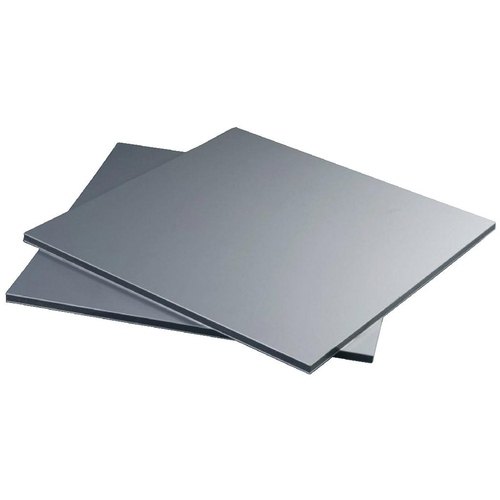Innovative Building Materials: Aluminum Composite Panels Leading the Way
Aluminum composite panels (ACPs) have become forerunners in contemporary building, transforming the field of architecture. ACPs combine strength, durability, and versatility through the bonding of two aluminum sheets to a core made of another material.
ACPs are renowned for their versatility, which makes them perfect for applications both inside and outside. They allow architects to express themselves freely, resulting in unique designs that combine aesthetics and utility. ACPs also adhere to sustainable construction methods and are environmentally benign, giving recyclability and energy efficiency.
Aluminum Composite Panels remain at the vanguard, setting new norms for innovation and design possibilities, as the building industry continues to change. Their exceptional qualities make them indispensable in contemporary architecture, and as technology develops and sustainability takes on increasing importance in the building industry, their future looks even more promising.
What are aluminum composite panels, and how are they different from other building materials?
Modern building materials called Aluminum Composite Panels (ACPs) are renowned for their excellent qualities and distinctive composition. They are constructed of a non-aluminum core material, usually polyethylene, and two thin aluminum sheets that have been joined together. ACPs have unique advantages thanks to this sandwich-like construction that sets them apart from conventional building materials.
Their light weight is one of their main differentiators. Compared to materials like solid aluminum, steel, or concrete, ACPs are substantially lighter. This quality makes them a good alternative for high-rise buildings because it not only makes transportation and installation simpler but also lessens the overall stress on a building’s structure.
Their adaptability is a further distinguishing feature. ACPs can be created in a huge variety of forms, dimensions, and hues, allowing architects to express their creativity. ACPs, as opposed to monolithic materials, provide a wide variety of design options, from streamlined, contemporary exteriors to bright interior treatments.
ACPs are also praised for being cost-effective without sacrificing performance. They are a popular option for many construction projects because they balance price and toughness.
Key Advantages of Using Aluminum Composite Panels in Architectural Design
- Versatility: Aluminum Composite Panels (ACPs) are incredibly versatile and give architects unmatched creative flexibility. They are simple to alter in terms of color, texture, and shape, enabling the creation of creative and striking designs.
- Lightweight: ACPs are exceptionally lightweight when compared to conventional building materials like concrete or solid metal. They are the perfect solution for high-rise structures because doing so lowers the expenses of shipping and installation.
- Robustness: ACPs are renowned for their resilience in the face of abrasive environmental conditions, UV radiation, and corrosion. They require little care and retain their visual appeal over time, which is particularly useful for long-lasting building projects.
- Cost-Effective: ACPs blend affordability and effectiveness. Their lighter weight and simplicity of installation result in lower labor costs, and their durability guarantees long-term cost savings.
- Energy Efficiency: Due to their insulating qualities, ACPs can improve the energy efficiency of a structure when utilized as cladding. They aid in improved thermal performance, which lowers heating and cooling costs.
- Sustainability: ACPs are recyclable and support environmentally friendly building techniques. Additionally lowering carbon emissions due to transportation is their modest weight.
Aluminum Composite Panels are becoming a more and more popular option for modern construction projects thanks to their ability to successfully combine aesthetic appeal, usability, and sustainability.
How does Canada Plastics differentiate itself in the production of high-quality aluminum composite panels?
Canada Plastics stands out in the industry for producing aluminum composite panels (ACPs) of the highest caliber by being dedicated to excellence throughout the whole manufacturing process. Our cutting-edge equipment and technology guarantee flawless production and finishing. We place a high priority on premium materials, which ensures exceptional ACP durability.
We give architects and designers the tools they need to unleash their creativity with a wide range of configurable options, from colors and textures to sizes. Panels are subjected to strict quality control to ensure they meet or surpass industry standards for durability and strength. We put a lot of effort towards reducing waste and recycling.
Canada Plastics takes pleasure in offering ACP solutions that skillfully combine aesthetics, usability, and environmental friendliness, differentiating us from competitors.
FAQS
- Can aluminum composite panels be customized in terms of color and finish?
Yes, aluminum composite panels can be fully customized in terms of color and finish, offering architects and designers a wide range of options to achieve their desired aesthetics.
- Where can I find the best aluminum composite panels?
Canada Plastics where you can discover perfection in manufacturing with your ultimate source for top-tier ACPs, ensuring flawless panels every time!
Conclusion
Aluminum Composite Panels (ACPs) are cutting-edge building materials that provide unmatched benefits for contemporary architectural design. They stand out due to their composition, which is both lightweight and robust, adaptability, and affordability.
In particular, Canada Plastics sets itself apart by fusing cutting-edge technology, superior materials, and a strong dedication to sustainability. These panels can be customized to any hue and finish, enabling architects to realize their imaginative concepts while maintaining sustainability.


